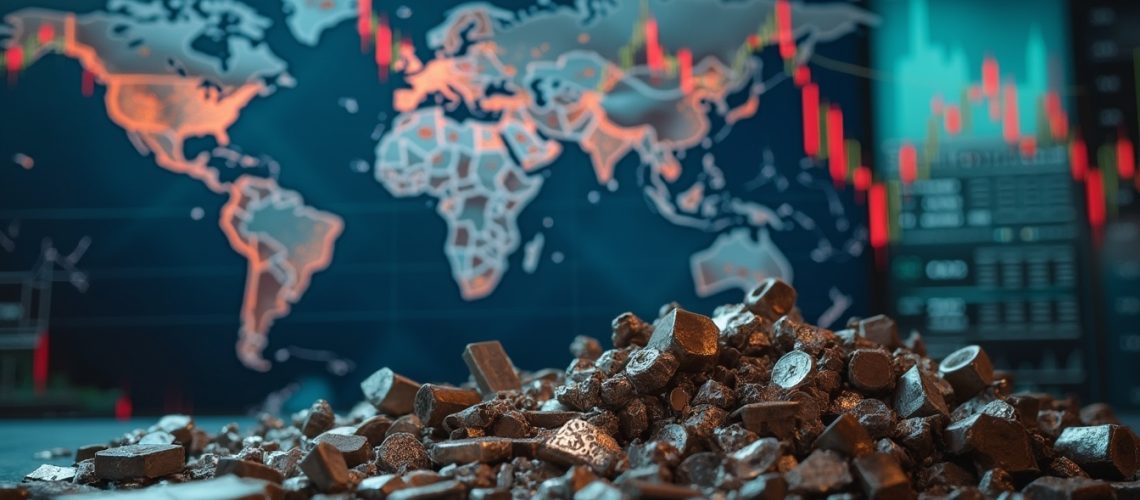How Trump’s Tariffs Are Impacting Global Metal Markets
The global metal markets experienced significant turbulence following Trump’s aggressive tariff policies, sending shockwaves through international trade dynamics and commodity pricing. The implementation of targeted tariffs on key trading partners triggered immediate and profound market reactions that reverberated across multiple economic sectors.
Understanding the Tariff Landscape
The Trump administration’s tariff strategy targeted major economic powers, imposing substantial trade barriers that would fundamentally reshape global metal markets. Specific tariff rates included 10% on Chinese imports and 25% on Canadian and Mexican metals, creating unprecedented economic tension.
What Were the Specific Market Reactions?
Metal markets responded swiftly and dramatically to these trade policy shifts. Critical commodities experienced rapid price declines:
- Iron ore dropped 1.8% to $103.75 per ton
- Aluminum declined 1.4% to $2,558 per ton, showcasing how Trump’s tariffs are transforming global trade.
- Copper fell 1.1%
- Zinc lost 1% of its market value
The decline in these key metals highlights the importance of understanding how Trump’s policies are reshaping global commodity markets. This is particularly relevant for investors and industries reliant on such commodities for manufacturing and production.
Economic Ripple Effects: What Are They?
The tariffs’ implications extended far beyond immediate price fluctuations. Economists warned of potential long-term consequences, including:
- Accelerated inflation rates
- Prolonged high interest rates
- Reduced global economic growth
- Significant impact on metal demand
One of the most affected sectors has been the global copper market, where we see these ripple effects on market prices as a result of these trade policies.
How is China Responding?
China’s commerce ministry quickly signaled potential countermeasures, preparing comprehensive strategies to mitigate economic pressure. The nation’s response included:
- Preparing potential World Trade Organization (WTO) complaints
- Developing strategic economic recovery plans, and considering how China’s economic revival is influencing international markets.
- Exploring alternative trade partnerships, especially as the country looks into export restrictions on critical minerals
These strategies indicate China’s robust approach to countering the economic stress imposed by global trade barriers.
What Are the Global Trade Dynamics?
The tariffs dramatically reshaped global trade dynamics, influencing factors like:
- US dollar strength
- Potential export restrictions on critical minerals
- Long-term metal market volatility
This reshaping not only affects prices but also alters supply chains and investment strategies worldwide. Nations are reconsidering their trade partnerships and evaluating the long-term impact on their economies.
What Should Investors and Industries Be Considering?
The new trade landscape presented complex challenges for investors and metal-dependent industries. Important considerations include:
- Increased risk assessment requirements
- Potential supply chain disruptions
- Need for adaptive investment strategies
Investors must pay attention to the shifting landscape, which requires a deeper understanding of market trends and political maneuvers. Diversification in sourcing and innovative hedging practices are becoming increasingly vital in this environment.
Technological and Market Adaptation: Are We Doing Enough?
Sophisticated investors and industries began exploring innovative strategies to navigate the uncertain metal market environment:
- Diversification of metal sourcing
- Advanced hedging techniques
- Enhanced risk management protocols
These adaptations are crucial for sustaining industry momentum in the face of unpredictable trade developments. Businesses need to implement more aggressive strategies to protect their interests and ensure continuity despite economic shifts.
What Does the Future Hold?
While the immediate impact of Trump’s tariffs created market uncertainty, the long-term implications remain complex and multifaceted. Continued monitoring of trade negotiations, geopolitical tensions, and market responses will be crucial for understanding the evolving global metal market landscape. Analysts predict ongoing adjustments as nations recalibrate their economic policies in response to emerging challenges.
Conclusion: The Interplay Between Politics and Economics
The intersection of trade policy and commodity markets demonstrates the intricate relationship between political decisions and economic outcomes. As global powers continue to recalibrate their trade strategies, metal markets will undoubtedly remain a critical indicator of international economic dynamics. Understanding these relationships will be pivotal for businesses, investors, and policymakers who must navigate an increasingly interconnected global economy.
Ready to Stay Ahead in the Volatile Metal Markets?
Discover how Discovery Alert’s AI-powered notifications can help you navigate the complex world of metal market investments, providing real-time insights into emerging opportunities and market shifts. Start your 30-day free trial today and transform market uncertainty into strategic investment advantages.







